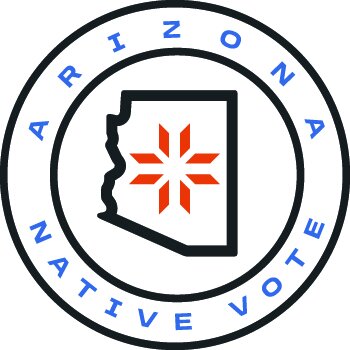Native voters are doing their part. Now Arizona counties must step up
Native voters are doing their part. Now Arizona counties must step up | Opinion
Many rural and tribal lands voters go through a lot to vote. Arizona counties could help make the process easier and more consistent.
Jaynie Parrish Opinion Contributor Sept. 23, 2025 Online & Printed in Arizona Republic Sunday Edition 9/28/25
I returned to Arizona in 2020 because my mentor, Peterson Zah, former president of the Navajo Nation, asked me to take a life-changing phone call with local leaders working to organize Navajo voters. That call brought me home to eventually found a nonprofit, Arizona Native Vote.
Four years later I found myself driving in the snow around sunset on the Friday after the 2024 election. I had a list of people in my home community of Kayenta whose ballots needed to be “cured” before the Sunday deadline. Curing is done when mailed ballots are rejected because maybe the voter forgot to sign the outer envelope, or their signature didn’t match the one on file.
Since most homes on Navajo Nation do not have a street number, the process ran something like this: We asked around if people knew the voter. Then, provided with the general location, I traveled down multiple dirt roads for about two hours until I found their house.
Because the elder I was searching for didn’t own a phone, we called the county clerk on my phone. Thankfully I had phone service and a Navajo language translator was available to answer the call, only for the official to say my phone didn’t count. We went to a relative’s house, made another call to the clerk. The voter was able to answer the questions and their ballot was counted 20 minutes before the deadline.
There were more than 500 people on the list our team was helping to locate. It was like finding a needle in a haystack. When we were lucky enough to locate someone, they still had to reach a county clerk by phone or in person at the election office.
We only managed to cure 24 ballots across Navajo and Apache counties.
As I mentioned, most homes on the Navajo Nation don’t have regular street addresses and there’s no at-home mail delivery. This means most people must use P.O. boxes to receive election mail and everyone who registers to vote should have both their home location and their P.O. box on file.
It can get more complicated. For instance, in Apache County, in-person voters must vote at a specific precinct, unlike neighboring Navajo County, where you can vote at any voting center. Confused? So are many voters in our communities, who travel long distances to vote but end up in the wrong precinct, or don’t have ID with their correct address. They must vote “provisionally”, and odds are high it will be rejected. Looking at Apache County as an example:
Between 2020 and 2024, the number of provisional ballots increased 710%, from 435 to 3,525;
Registered voters on tribal lands were 58% more likely to have to cast a provisional ballot than voters off tribal lands in the county;
Provisional ballots cast in tribal precincts were rejected at 14 times the rate of those off tribal lands;
And, the majority (61%) of rejected provisional ballots were due to a registered voter showing up to the wrong precinct or being given the wrong ballot by the county.
Native voters are doing their part: we are showing up to vote. The best way forward is for the state to invest more dollars in county election offices, so we can reduce the number of ballots that are cast provisionally and even require “curing.”
There should be an easier way to help rural and tribal lands voters update their information and know where to vote whether or not we have a street address.
Jaynie Parrish, Navajo Nation, is founder and director of Arizona Native Vote, a nonprofit helping to boost Native American civic participation.


